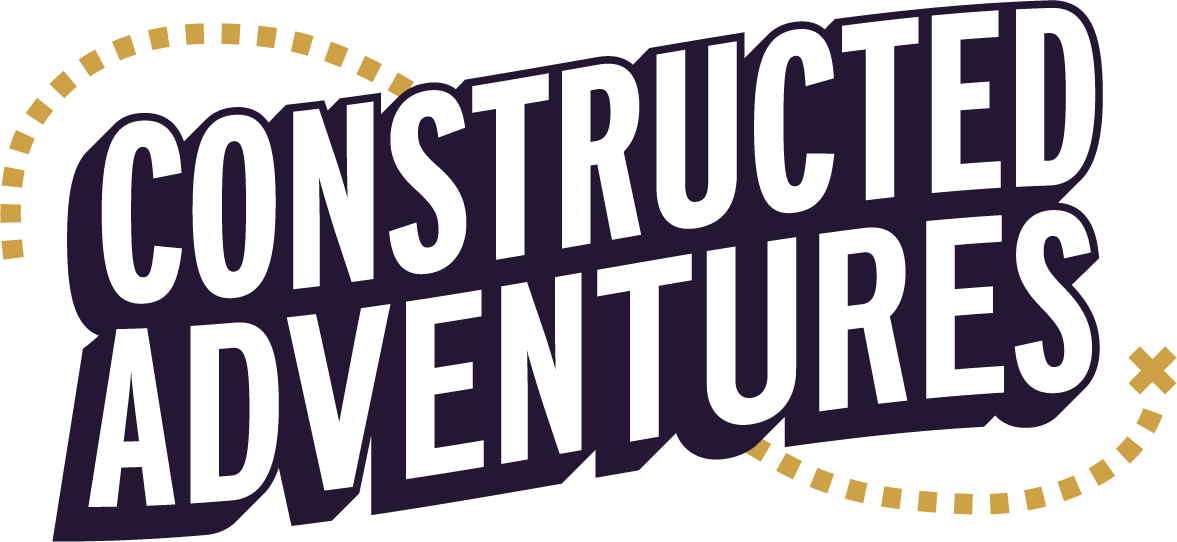How to Add Immersion into a Treasure Hunt
It’s easy to focus on the puzzles and the “WOW” moments of an adventure, but I often neglect the foundational theme and mood that the adventure is built around. This post aims to address my most often overlooked aspect of an adventure, the atmosphere. Let’s talk through building a theme, the different stages of an adventure, and how to improve your game’s immersion at every step.
Building a Theme:
Building a theme is a journey that you’ll have to do on your own, since it’s what makes your adventure unique. That said, you’ve probably already got a good idea of what you’d like your theme to be if you’re planning an adventure in the first place, so here’s a list of things to consider to help flesh it out.
What mood does your adventure try to evoke? Spooky? Whimsical? Tense? High-Octane?
Can you include music or atmospheric noises in your adventure?
Can you use any scents as part of your theme? Tastes? Textures? Incorporate as many senses as you can into your player’s experience.
What colors/patterns/images are a part of your theme? Does your evil organization have a logo? Should clues for your Xmas hunt be red and green?
Player Intention:
Why are the players here?
How did they get here?
What do they need to do to win?
Why do they need to hurry?
What happens if they run out of time? What’s at stake?
Why are there puzzles/clues hidden?
Why are you (the host) here? Is there an explanation for why/how you give hints that fits into the narrative?
Building a Story:
As you’re building out your adventure to take advantage of your theme, you’ll want your player’s progression to affect the world. In the simplest case, the adventure itself doesn’t progress the story until the adventure is completed, but it’s more immersive (and sometimes even helpful to flesh out the creation of the adventure) for the story to develop alongside the progression of your players. It can be a fun gambit to reuse your story elements as puzzles (Cardan Grille, Ottondorf Cipher, etc.). That said, for your players' benefit, make sure that your exposition doesn’t involve too much reading at once. If you have a lot to say, spread it out across multiple hints, and have your players slowly discover pieces of your world. Try to set up circumstances that generate emotion, and don’t be afraid to throw in a betrayal or big reveal to throw your players for a loop!
The Invitation:
Now that we have our adventure planned out, we can move on to the actual implementation, and what better place to start than at the beginning! The invitation is your player’s first taste of what’s to come, and you only get one chance at a first impression. Get creative, and lean into your theme! If your players need to rescue Santa, maybe leave them a message under your emptied Xmas tree surrounded by some coal. If you’re creating a Harry Potter adventure, have a stuffed owl “deliver” your players a message explaining how Harry and Ron need their help. Make sure the invitation includes pertinent details for your adventure. Start with the obvious when and where, but also include what clothing/shoes they should wear, as well as any items they should bring (flashlight, pen/paper, secret clue that hasn’t yet been revealed, etc.).
Crossing the Threshold:
Just like Harry Potter running through Platform 9¾, or Bastian falling into the Neverending Story, this is the point where your players enter into your game. This is a great opportunity to amp up the immersion and draw your players into your world. Physical thresholds work great (crossing a bridge, moving through a curtain, behind a waterfall, etc.), but metaphorical thresholds work great as well (a twinkle of small bells, dimming the lights, a warm hug, a moment of silence, etc.).
The Wind-Down:
The completion of your adventure is the climax, so take a moment to gently bring your players back to reality. Now is a great time to bust out any remaining exposition you might have, detailing how your player’s actions have saved the world, but it’s also a great time to sit down with them and have a drink. Ask them about their experience. What was their favorite bit? Was anything too hard/not clear enough? Alternatively, you can sidestep the ending to your story altogether and instead do a big reveal. For example, when your player finds “the treasure their heart most desires”, you could surprise them with a backyard party playing cornhole. Instead of stopping the evil spies from destroying the world, your player could get proposed to by their fiancee.
Here’s hoping that you, dear reader, got a few cool tricks to pull your players deeper into your worlds of puzzles and mystery! Stay curious!






